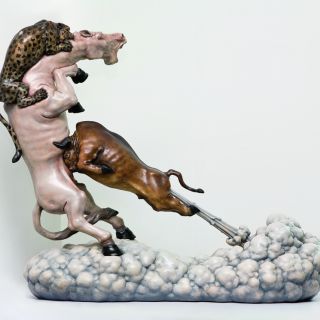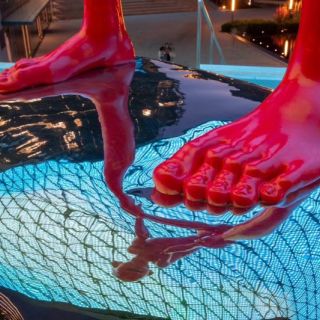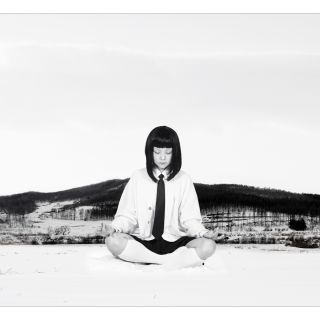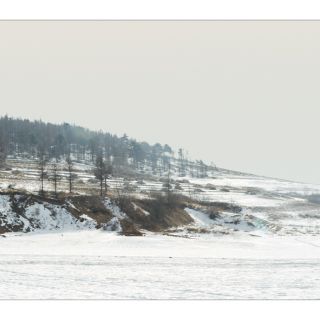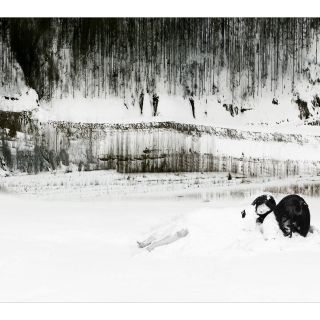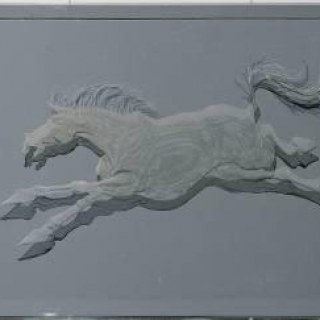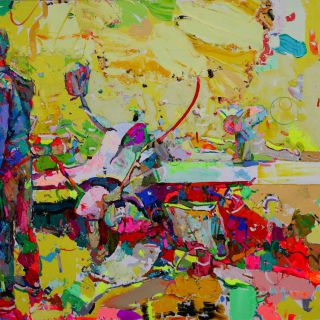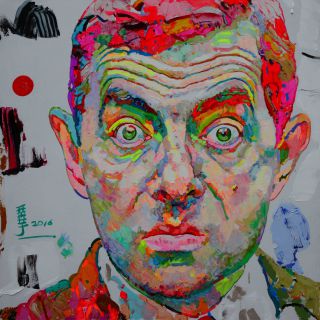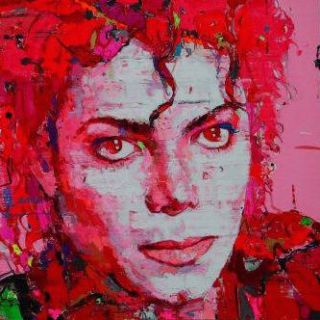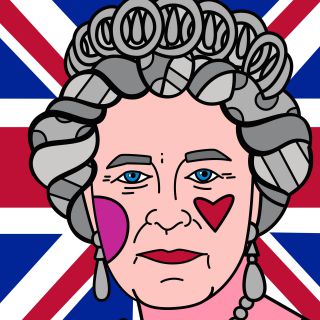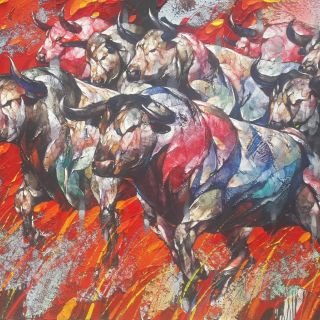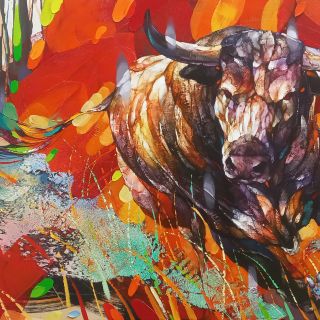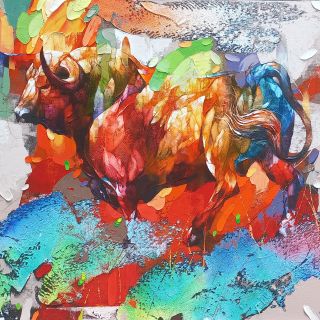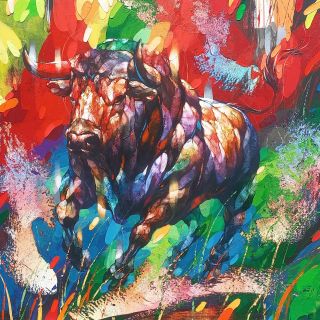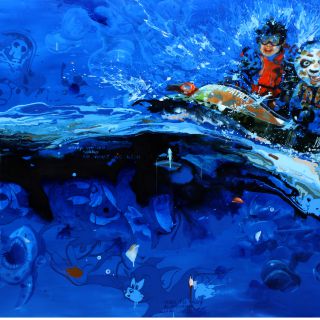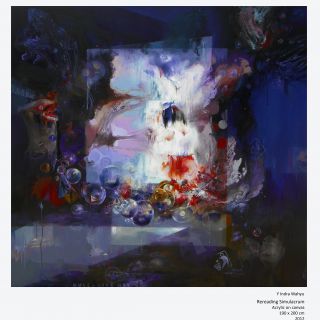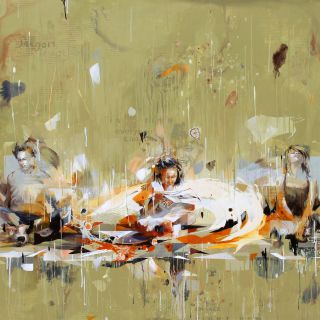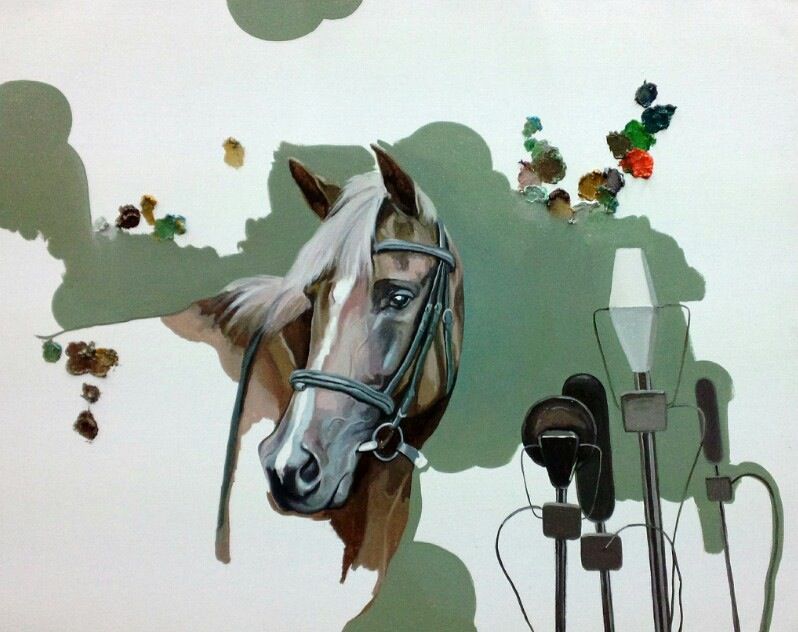
Mao Yanyang was born in Hunan, China in 1980. In 2002, he obtained his Bachelor's Degree of Fine Art from the Oil Painting Department of one of the most elite art academies in China, the Sichuan Academy of Fine Arts. He was one of the very few top students selected to participate in the Sichuan Academy's Master's Degree Programme, which he completed in 2005.
In 2007, Mao Yanyang was selected as one of the top 25 emerging Chinese artists (out of over 1,000 applicants) at the Chinese Art Prize 2007. He was then selected as the Chinese Art Prize (CAP) 2008 Gold Prize winner by the Director of Art Cologne, Gerard Goodrow, the Curator of the Asian Art Museum, Jeff Kelley, and a prestigious panel of jurors. The Chinese Art Prize recognised Mao Yanyang as one of the top Chinese contemporary artist talents. In 2007, Mao's work was exhibited at the Zhu Qizhan and Duolun Museums in Shanghai andat the BS1 Contemporary Art Museum in Beijing. He has since exhibited in Europe, at Art Cologne, as well as in New York.
In 2007, Mao Yanyang was selected as one of the top 25 emerging Chinese artists (out of over 1,000 applicants) at the Chinese Art Prize 2007. He was then selected as the Chinese Art Prize (CAP) 2008 Gold Prize winner by the Director of Art Cologne, Gerard Goodrow, the Curator of the Asian Art Museum, Jeff Kelley, and a prestigious panel of jurors. The Chinese Art Prize recognised Mao Yanyang as one of the top Chinese contemporary artist talents. In 2007, Mao's work was exhibited at the Zhu Qizhan and Duolun Museums in Shanghai andat the BS1 Contemporary Art Museum in Beijing. He has since exhibited in Europe, at Art Cologne, as well as in New York.
Viewing 1 works by Mao Yan Yang
Sort
Biography 
Biography
Mao Yanyang was born in Hunan, China in 1980. In 2002, he obtained his Bachelor's Degree of Fine Art from the Oil Painting Department of one of the most elite art academies in China, the Sichuan Academy of Fine Arts. He was one of the very few top students selected to participate in the Sichuan Academy's Master's Degree Programme, which he completed in 2005. In 2005, Mao participated in his first important museum show at the He Xiangning Museum in Shenzhen, China. In 2006, he was selected to participate in his first international exhibition in Pusan, South Korea.
In 2007, Mao Yanyang was selected as one of the top 25 emerging Chinese artists (out of over 1,000 applicants) at the Chinese Art Prize 2007. He was then selected as the Chinese Art Prize (CAP) 2008 Gold Prize winner by the Director of Art Cologne, Gerard Goodrow, the Curator of the Asian Art Museum, Jeff Kelley, and a prestigious panel of jurors. The Chinese Art Prize recognised Mao Yanyang as one of the top Chinese contemporary art talents. In 2007, Mao's work was exhibited at the Zhu Qizhan and Duolun Museums in Shanghai and at the BS1 Contemporary Art Museum in Beijing. He has since exhibited in Europe, at Art Cologne, as well as in New York. In 2008, Mao Yanyang was selected to participate in the Asian Triennial in Manchester, UK. He was also awarded a scholarship to study at the Chinese Arts Centre in Manchester, United Kingdom.
In 2007, Mao Yanyang was selected as one of the top 25 emerging Chinese artists (out of over 1,000 applicants) at the Chinese Art Prize 2007. He was then selected as the Chinese Art Prize (CAP) 2008 Gold Prize winner by the Director of Art Cologne, Gerard Goodrow, the Curator of the Asian Art Museum, Jeff Kelley, and a prestigious panel of jurors. The Chinese Art Prize recognised Mao Yanyang as one of the top Chinese contemporary art talents. In 2007, Mao's work was exhibited at the Zhu Qizhan and Duolun Museums in Shanghai and at the BS1 Contemporary Art Museum in Beijing. He has since exhibited in Europe, at Art Cologne, as well as in New York. In 2008, Mao Yanyang was selected to participate in the Asian Triennial in Manchester, UK. He was also awarded a scholarship to study at the Chinese Arts Centre in Manchester, United Kingdom.
Critique 
Critique
Towards Credulity by Rosalie Tombeur
While combining realism and expressionism, Mao Yanyang's new works and audacious paintings surprise the observer. Using daily broadcasted images, he appeals to the spectator’s collective and individual memory shaped after years of media confrontation.
However, there is a very big difference between the aforementioned known images and Mao Yanyang’s works. The audacity of the artist’s ideas is expressed through the constant presence of several microphones in each one of his paintings. This presence might seem irrelevant and surreal, especially when the artist is depicting war scenes, however, they symbolize the transformation of our world into an image-consuming universe.
We are all aware that images (paintings, photography, films...) are produced directly or indirectly by men. They are not simple recollections of reality but constructed objects entrenched in a very complicated relationship with reality. What we see on TV, in the newspapers or on canvases does not represent reality but is more likely to be produced by man. And yet, we do not want to face this fact and are tempted to take images for granted. What we recall of history is what we heard of it, saw of it or felt of it. We must keep in mind that historical facts spread true points of view and that points of view are personal and subjective. Mao Yanyang’s paintings question history’s liability. He confronts the viewer with historical scenes and personalities to remind us not to be fooled by the so-called objectivity of images, speeches or texts.
"The main purpose of the "microphones" painted in as part of different historical events and creating a surreal effect amidst the depiction of conflicts, is to reveal in my works a dramatic absurdity mixed with hyper-realism. This should lead the viewer to question the truth of media reports on historical events. No one can figure out exactly what happened in history."
The artist mingles with various subjects: taking us from apocalyptic war scenes to a couple kissing passionately, from a smoking monkey to a depiction of the spiritual leader of the Catholic Church, Pope Benedict XVI. The works are a combination of the artist's fertile imagination as well as his own recollection of media images, reminding us that he too is part of the system and stressing the fact that collective and individual consciousness is shaped by the media.
By depicting animals in his paintings, Mao Yanyang states his emphasis on environmental protection and man's direct influence on the animal. Animals have to submit to the power of humans in the same way that humans are submitted to media power. Since humans and animals are interdependent the artist suggest we take responsibility and action instead of burying our heads in the sand.
The audacity of Mao Yanyang’s paintings lies in the fact that they are an open criticism of the media system controlling our world. Considering China’s history of censorship and media control, one can only applaud the artist’s courage and clear-sightedness.
While combining realism and expressionism, Mao Yanyang's new works and audacious paintings surprise the observer. Using daily broadcasted images, he appeals to the spectator’s collective and individual memory shaped after years of media confrontation.
However, there is a very big difference between the aforementioned known images and Mao Yanyang’s works. The audacity of the artist’s ideas is expressed through the constant presence of several microphones in each one of his paintings. This presence might seem irrelevant and surreal, especially when the artist is depicting war scenes, however, they symbolize the transformation of our world into an image-consuming universe.
We are all aware that images (paintings, photography, films...) are produced directly or indirectly by men. They are not simple recollections of reality but constructed objects entrenched in a very complicated relationship with reality. What we see on TV, in the newspapers or on canvases does not represent reality but is more likely to be produced by man. And yet, we do not want to face this fact and are tempted to take images for granted. What we recall of history is what we heard of it, saw of it or felt of it. We must keep in mind that historical facts spread true points of view and that points of view are personal and subjective. Mao Yanyang’s paintings question history’s liability. He confronts the viewer with historical scenes and personalities to remind us not to be fooled by the so-called objectivity of images, speeches or texts.
"The main purpose of the "microphones" painted in as part of different historical events and creating a surreal effect amidst the depiction of conflicts, is to reveal in my works a dramatic absurdity mixed with hyper-realism. This should lead the viewer to question the truth of media reports on historical events. No one can figure out exactly what happened in history."
The artist mingles with various subjects: taking us from apocalyptic war scenes to a couple kissing passionately, from a smoking monkey to a depiction of the spiritual leader of the Catholic Church, Pope Benedict XVI. The works are a combination of the artist's fertile imagination as well as his own recollection of media images, reminding us that he too is part of the system and stressing the fact that collective and individual consciousness is shaped by the media.
By depicting animals in his paintings, Mao Yanyang states his emphasis on environmental protection and man's direct influence on the animal. Animals have to submit to the power of humans in the same way that humans are submitted to media power. Since humans and animals are interdependent the artist suggest we take responsibility and action instead of burying our heads in the sand.
The audacity of Mao Yanyang’s paintings lies in the fact that they are an open criticism of the media system controlling our world. Considering China’s history of censorship and media control, one can only applaud the artist’s courage and clear-sightedness.

Stay connected.
Sign up to our newsletter for updates on new arrivals and exhibitions



